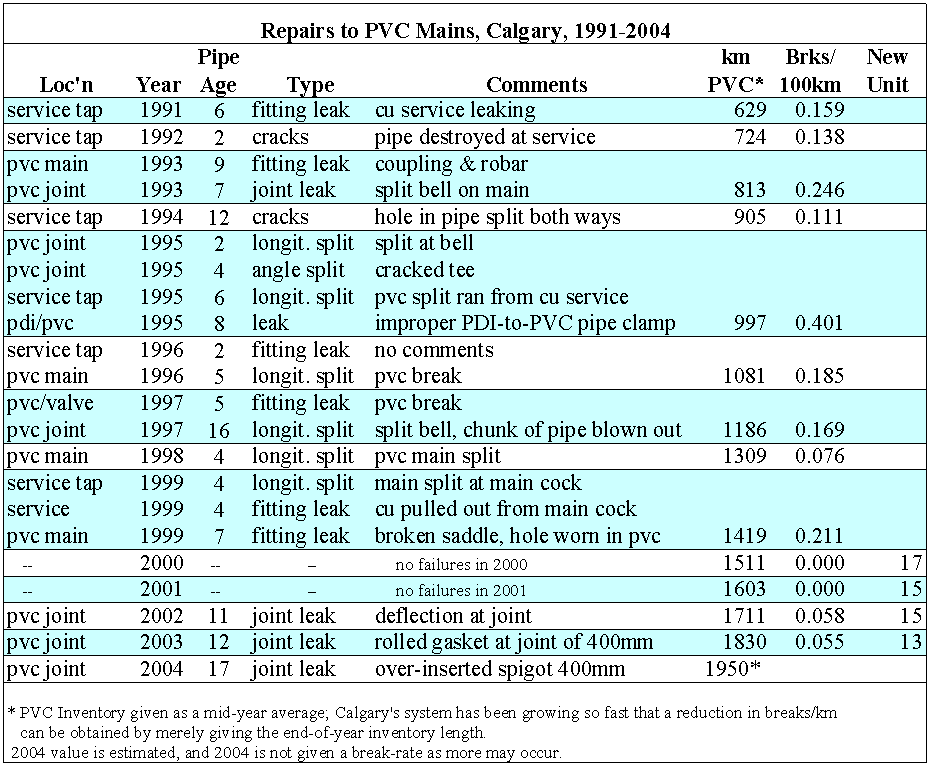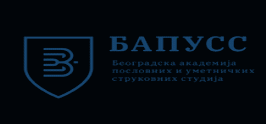RESEARCHERS AND THEIR BOUNDARY PARTNERS JULIUS NYANGAGA INNOVATION WORKS
20052006 BUTTERFLY CENSUS RESEARCHERS PLEASE FILL OUT THE ENTIRE4 EUROPEAN ASSOCIATION OF CULTURAL RESEARCHERS EV STATUTE OF
A PPLICATION FORM FOR RESEARCHERS WISHING TO INVOLVE PEOPLE
A2 ALL RESEARCHERS PLEASE NOTE THAT ALL RESEARCHERS MUST
Abel Munch Extraordinary Chair Visiting Researchers and Artists
ACCESS OF EXTERNAL RESEARCHERS TO THE NATIONAL FUSION LABORATORY
Boundary partners:
Researchers and their boundary partners
Julius Nyangaga, Innovation Works
International Livestock Research Institute (ILRI)
The Outcome Mapping (OM) manual defines boundary partners as " … those individuals, groups, or organisations with whom the programme interacts directly and with whom the programme can anticipate opportunities for influence".
For teams with a strong research orientation the concept of boundary partners the process presents some challenge. This is because it usually takes time exploring problems and solutions before researchers feel ready to engage with other actors in order to work towards vision. Many are reluctant or fail to see the relevance of engaging with what may be considered ‘downstream’ boundary partners while at initial investigation and testing stages.
Fortunately, research teams are now acknowledging that:
Progression towards a desired direction in a system is a continuous process that involves every actor - including the researchers – in three cyclically linked phases of problem identification + solution exploration, intervention testing + adoption, intervention adaptation + wider scaling.
In each of the phases, it is crucial researchers identify partners who will support their investigatory efforts, outputs and address possible constraints to output application.
A report exploring past successful research cases in ILRI shows researchers being involved in matters ranging widely from the technical to cultural to political; exploiting openings and managing constraints.
Involving users of research outputs, especially the boundary partners, early in the project enhances the relevance and acceptance of the research intentions and increases the probability that outputs will be used.
Descriptions of targeted vision (or goal) focus a lot on benefiting communities – farmers, traders, rural populations, the poor or disadvantaged, conflict victims etc. Yet researchers operate in small numbers and, in many instances, have no direct links to such populous communities.
Developing a detailed Vision statement, as explained in the OM manual, enables implementers describe changes sought and actors involved.
It is only through this that researchers are able to identify the boundary partners in whom transformation will be an indication of progress towards desired change in those target communities.
And that presents the main challenge; it is transformation in the boundary partners that an implementing team is expected to observe, capture and report outcomes showing progression towards achievement of vision.
“If the boundary partners are not the target communities, how does one prove that transformation in them indicates vision is being achieved?”
Actor analysis is proving to be a great process in identifying the roles of other agents in the system and hence the various types of partners the project can work with to consider in achieving the vision.
Enrique Mendizabal has advised categorization of actors using high and low levels of two factors – alignment (partners teams want to work with to change their behaviours) and interest. That is quite useful but I feel it is important to go further.
I wish to thank Dannie Romney of CABI Africa for sharing the following thoughts after facilitating a project planning process:
We go further than just ask planners to respond to the questions posed during the planning workshop: “Who will be the most important actors with whom you work? On whose actions does the success of the program most depend?”
During Step Zero, one should carry out actor analysis in a process that is as participatory as possible so that an implementing team is assisted in the identification and mapping of crucial actors, relationships and linkages and patterns of information flow. The exercise should enable detection and analysis of gaps and links.
It is only from such an exercise that any team can be able to pick out boundary partners whose transformation will be an indicator the system is achieving vision and what wide range of activities (including strategic partners) will help influence those changes.
Planning how to exploit which strong links between target actors and manage gaps and weak links goes a long way in supporting such change in the system.
It is also from such an exercise that the team can select both qualitative developments (e.g. progress markers in boundary partners, application of strategic activities) and quantitative (e.g. changes observable through selected surveys) to be used to monitor and report on progress. In many instances it will be important to demonstrate the relationship between the two developments.
The only draw-back is during a 3 – 5 day planning workshop process – where so many activities (including incorporation of Outcome Mapping concepts) are intended – actor analysis in order to identify boundary partners can quite a substantial addition.
However, the analysis can be revisited periodically during monitoring and evaluation, when reviewing progress in partners and the effect of the project’s support strategies.
***********
ARE RESEARCHERS FOR THE ELECTRONICONLY JOURNAL COLLECTION? L
ARTIFICIAL INSEMINATION IN XIPHOPHORUS FREQUENTLY RESEARCHERS USING XIPHOPHORUS MUST
AUTHORITY FOR THE RELEASE OF TRANSCRIPTS RESEARCHERS NORMALLY PROVIDE
Tags: boundary partners, identify boundary, boundary, works, innovation, researchers, partners, nyangaga, their, julius
- APPLICATION FOR MEMBERSHIP OF SOCIETY THE SOCIETY OF NOTARIES
- FOCUSED RISK ANALYSIS PAGE 36 USE OF DECISION ANALYSIS
- 11 ANEXO II DEFINICIONES PARA LA INTERPRETACIÓN
- “DATA WILL” FOR THE LIST OF LARGEST KNOWN PRIMES
- HOW TO USE THE SHORT LISTING MATRIX GENERAL
- N° NOM ET PRENOM (S) PARTI SECETUR OU VILLAGE
- PEVNÉ LÁTKY KONSTANTY EOCEL 21 1011PA
- CONVENTION SUR LA DIVERSITÉ BIOLOGIQUE UNEPCBDCOP10WGICRP6 21 OCTOBRE 2010
- INDONEZYJSKIE I POLSKIE IDIOMY – W POSZUKIWANIU EKWIWALENTÓW TŁUMACZENIOWYCH
- REPUBLIKA SRBIJA PREKRŠAJNI SUD U NOVOM SADU BROJ SU
- L EJERS NAVN A DRESSE ANSØGNING OM DYRTILLADELSE MIDLERTIDIG
- DECLARATION ON HONOUR ON EXCLUSION CRITERIA AND SELECTION CRITERIA
- Accesibilidad web en Portales Sobre Viajes y Transportes Accesibilidad
- UNIVERSITE DE ZAGREB FACULTE DE MEDECINE ETUDES DOCTORALES BIOMÉDECINE
- ESTUDO DO PERFIL MOLECULAR DO CÂNCER DE MAMA E
- LATÍN II UNIDAD Nº 8 LA TRANSMISIÓN DE LA
- PROGRAM POTICANJA LOKALNOG RAZVOJA 20142016 KRAPINSKO – ZAGORSKA ŽUPANIJA
- DECRETO N 21 EL PRESIDENTE DE LA REPUBLICA DE
- CONTRATO DE MATRICULA CONTRATO DE MATRÍCULA NÚMERO NOMBRE
- 83 PAGES 255260 THE CRUSADES AND THE WIDER WORLD
- 1 PROMINENTLY DISPLAY D&B HOOVERS LOGOS 2 ADD
- V LATVIJAS LAUKU KONSULTĀCIJU UN IZGLĪTĪBAS CENTRS ALSTS LAUKU
- EI01A PRAVILA ŠAHA PREVEO BRANISLAV ŠUHARTOVIĆ IA LEKTOR NJEGIĆ
- SZEMÉLYES ÉLMÉNYBESZÁMOLÓ A NÁPOLYBAN TÖLTÖTT HÓNAPOKRÓL NÁPOLY EGY ZAJOS
- SUCHA BESKIDZKA 15092020 ZAPYTANIE OFERTOWE ZGODNIE Z ART 4
- APOYO PARA ESTADÍSTICA CON R VARIABLE CUANTITATIVA CONTINUA
- USF GRADUATE CATALOG 2018201920192020 NURSE ANESTHESIA (DNP) CON 122118
- 2 AGRES 2141 (XXXVO05) PROGRAMA INTERAMERICANO
- UNIVERSITY OF WORCESTER GUIDE TO OFF CAMPUS ACCOMMODATION TO
- HONORS CHEMISTRY LAB 7 ELECTRON CONFIGURATIONS OF ATOMS AND
 CHANGE OF REGISTERED OFFICE PARTICULARS – FORM A4 ASSOCIATIONS
CHANGE OF REGISTERED OFFICE PARTICULARS – FORM A4 ASSOCIATIONSANEXO N° 1 M A N D A
ZAŁĄCZNIK DO UCHWAŁY NR XIV 3502006 RADY MIEJSKIEJ W
BİLİMSEL ARAŞTIRMA PROJELERİ KOORDİNASYON BİRİMİ MERKEZ AMBAR MUAYENE KABUL
 COMPETENCY CHECKLIST FOR HEIGHT AND WEIGHT NAME DATE
COMPETENCY CHECKLIST FOR HEIGHT AND WEIGHT NAME DATEDER LEHRSTUHL FÜR LITERATUR UND KULTURWISSENSCHAFT AM INSTITUT FÜR
 MINIMIZING FAILURES TO PVC WATER MAINS ROY BRANDER PENG
MINIMIZING FAILURES TO PVC WATER MAINS ROY BRANDER PENGJAIME HELIODORO RODRÍGUEZ CALDERÓN GOBERNADOR CONSTITUCIONAL DEL ESTADO LIBRE
 УПИС ОЦЕНА КОД ДР СРЂАНА БОГЕТИЋА ЗА СТУДЕНТЕ КОЈИМА
УПИС ОЦЕНА КОД ДР СРЂАНА БОГЕТИЋА ЗА СТУДЕНТЕ КОЈИМАACC5930 INFORM ACC OF CHANGES TO YOUR BUSINESS COMPLETE
KAKO PREŽIVJETI STRUČNI ISPIT? DIANA GAVRAN DIPL UČITELJICA OŠ
FORM TO NOTIFY INTENDED ZONAL APPLICATIONS UNDER REGULATION (EC)
 FICHA DE REVOCACION DE RECOGIDA DE ALUMNADO POR TERCERAS
FICHA DE REVOCACION DE RECOGIDA DE ALUMNADO POR TERCERASList OF Decisions Made Page NO 11 Reg Ref
 ` APPLICANT REFERENCE CHECK FORM INSTRUCTIONS WHERE POSSIBLE
` APPLICANT REFERENCE CHECK FORM INSTRUCTIONS WHERE POSSIBLE DONEZTEBEKO OSASUN ETXEA ¿QUÉ PUEDES HACER PARA QUE NO
DONEZTEBEKO OSASUN ETXEA ¿QUÉ PUEDES HACER PARA QUE NO SNIP SAME SIDE CORNER RECTANGLE 1 SEZNAM DOKLADŮ K
SNIP SAME SIDE CORNER RECTANGLE 1 SEZNAM DOKLADŮ K İSTİNYE ÜNİVERSİTESİ SAĞLIK BİLİMLERİ ENSTİTÜSÜ TEZ YAZIM KILAVUZU 2019
İSTİNYE ÜNİVERSİTESİ SAĞLIK BİLİMLERİ ENSTİTÜSÜ TEZ YAZIM KILAVUZU 2019PROGRAM ZAJĘĆ POZALEKCYJNYCH „ MY WIEMY CO JEMY” PRZEZNACZONY
 EQUIPMENT PROGRAM PRESSURE REDUCTIONCOMFORT CHAIRS CLINICAL CONSIDERATIONS FOR PRESCRIBERS
EQUIPMENT PROGRAM PRESSURE REDUCTIONCOMFORT CHAIRS CLINICAL CONSIDERATIONS FOR PRESCRIBERS